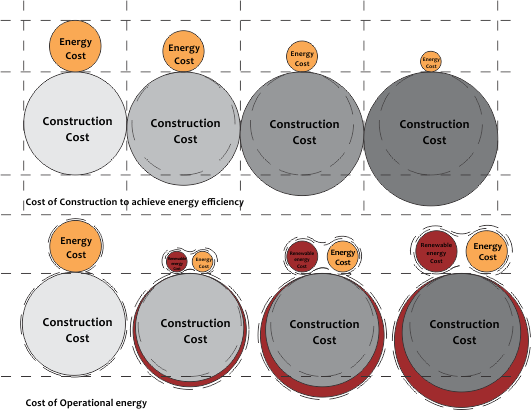Rajan Rawal is Assistant Professor at the Faculty of Design. He is also the Executive Director of the Centre for Center for Advanced Research in Building Science & Energy (CARBSE). Additionally he held the position of Coordinator of the Post Graduate Office at the University for some time. He will also be working with CRDF in supporting the development of guidelines for project management in alignment with the new consulting policy.
He is a registered architect, graduated from School of Architecture, Institute of Environmental Design, Vallabh Vidyanagar. He worked with Vastu Shilpa Foundation for Studies and Research in Environmental Design before joining CEPT University. He teaches design and construction courses at undergraduate program and energy efficient built environment, energy modeling at post graduate level. His work focuses on ‘energy performance of buildings and cities’ and ‘architectural science education’. He coordinates the activities of Centre for Advanced Research in Building Science and Energy (CARBSE) recognized by US Agency for International Development (USAID) and Ministry of New and Renewable Energy (MNRE), Govt. of India. He serves as Principal Investigator and Co-principal Investigator of USAID and MNRE funded research projects. Presently, he is the Project Director (India) for the prestigious Indo-US Joint Clean Energy Research and Development Centre (JCERDC) project for Buildings. JCERDC is a multi-party five-year research project lead by CEPT University in India and Lawrence Berkeley National Laboratory (LBNL) in the USA. He is also leading research activities at CEPT University, funded by Shakti Sustainable Energy Foundation. Rajan Rawal is a member of the technical core committee for Benchmarking of buildings, Window Labeling Program committee at Bureau of Energy Efficiency, Govt. of India; Member of National Building Code BIS-CED 46 and BIS-CED 58 pertaining to Sustainable Buildings, technical committee member for GRIHA rating system, and technical expert at India Green Building Council. He is IGBC authorized evaluator for LEED certification rating for commercial buildings and Green Homes. He is also empanelled as an assessor with GRIHA. He is one of the co-founders of International Building Performance Simulation Association (IBPSA) India chapter and also represents IBPSA India at IBPSA World events. He is the recipient of Society of Building Science Educators’ Jeffery Cook Memorial Scholarship 2012.
Net Zero Energy Buildings: Can money recognise symbiotic relation between EE and RE.
Ambitions to build a net zero energy building (NZEB) requires tremendous amount of attention to every aspect of building design, construction and operation. Attempt to reduce building energy loads first, and then rely on onsite renewable energy generation to meet remaining building energy loads is most commonly adopted approach. Integrated design approach may help achieve NZEB design over a short time span. Along with more confidence in each design decision, such a design approach also provides a platform for innovation. India possesses the ability to design, construct and operate NZEBs. Enough skills, knowledge and experience prevail in Indian building sector professionals to build NZEBs. Such a situation gets strengthened by the availability of innovative technologies in field of building materials, Daylighting technologies, cooling and heating technologies, renewable energy technologies and building communication and controls technologies. First generation of NZEBs in India have successfully achieved precise balance between these technologies. Long-term energy performance evaluation and post occupancy – user satisfaction evaluation of first generation NZEBs in India will help build more and better NZEBs in India.
Typically, envelop optimization which includes massing and inclusion of passive design strategies is first step to reduce energy loads. This should be attempted by building design followed construction materials and methods. Heating Ventilation and Air Conditioning (HVAC) optimization along with optimization Daylighting and electric lighting is naturally second step. During these two steps there is significant reliance on high performance materials or systems to reduce energy demand of building. Implementing building energy management and smart control system is a step forwards towards achieving NZEB. These steps are termed as ‘energy efficiency (EE) measures’. Selection renewable technologies (RE) for given building and sizing of RE is the final step. However true NZEB status should be claimed only after one year of operation. Sequence stated is one of the most common approach practices so far. Goal should be to achieve minimum energy performance index (EPI) calculated in kWh/m2.year, of building and only, then rely on RE to generate the needed energy. To achieve minimum EPI one does rely on EE measures. These measures go beyond business as usual (BAU) practices, which can translate into higher cost of building than business as usual cost. Installation of RE to meet energy demand also add cost to NZEB.
Economics of NZEB is very vital subject to investigate. ‘Return on investments’ (RoI) and ‘Payback period’ are two most commonly used terms. RoI helps to understand ratio of gains to cost, hence it is mentioned in percentages (%). INR 100 invested with RoI of 24% per annum means one can expect INR 124 over one year as incremental gains. Payback period is the amount of time it takes for an investment to pay for itself.
Dynamics between initial investment, RoI and payback period for NZEB presents classic case for study. Let us assume a scenario, where construction of BAU building is INR100 without installation of RE sources. This building consumes INR 10 worth energy per year to operate building. To make this building energy efficient, one may spend additional INR 10 to make total cost of building INR 110. By doing this additional investment one is consuming INR 05 worth energy to operate building and saving INR 05 worth energy. In this case simple payback period is 2 years. If we install RE source worth INR 50 to meet demand of building, a revised building construction cost of energy efficient building with RE installation – a NZEB can be assumed at INR 150. In this case simple payback period will be 10 years instead of 2 years. In pure business terms if we see payback period as only reference, above mentioned NZEB case does not have higher merit, obviously because of longer payback period. It is of common sense that after 10 years the building will keep generating energy to meet its own operational energy without any additional cost. This can be understood well if we examine internal rate of return (IRR). IRR is a rate of return to measure profitability of capital investment. If we make building far more efficient than in assumed case, means energy demand also will be less hence reduction in RE installed capacity which in term will reduce cost of building with RE installed. This demonstrate that ‘Payback’ period should not be only reference to evaluate economic benefits of EE and RE integrated NZEBs.
Adopting of EE and RE with appropriate balance based on rigorous analysis on case to case basis is the only way to make true NZEBs, against trend of installing higher capacity RE without incorporating EE measures at design, construction and operations stage.
EE and RE are surely two sides of a coin, one must strive to turn theoretical third outcome into reality in which the coin comes to rest upright on its edge, rather than falling on either side. Something to learn from famous scene of Bollywood block buster movie ‘Sholay’.
(With inputs from Prasad Vaidya)
Disclaimer: Reference in this Web site to any specific commercial products, processes, or services, or the use of any trade, firm or corporation name is for the information and convenience of the site’s visitor’s, and does not constitute endorsement, recommendation, or favoring by the Ministry of Power, Government of India, or Bureau of Energy Efficiency, Ministry of Power, Government of India. Additionally, the views and opinions of authors expressed herein do not necessarily state or reflect those of the Ministry of Power, Government of India, or Bureau of Energy Efficiency, Ministry of Power, Government of India, and shall not be used for advertising or product endorsement purposes.


